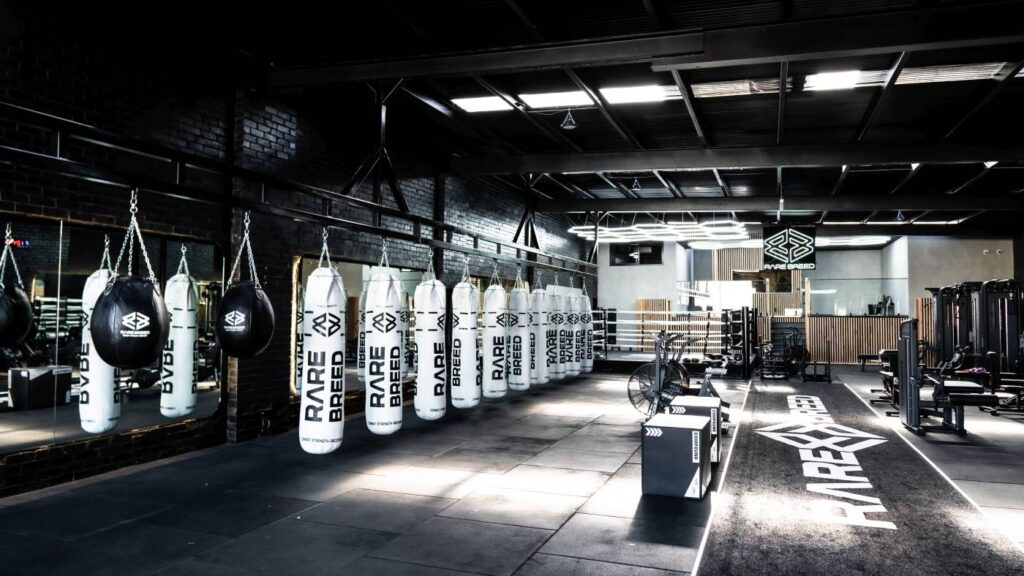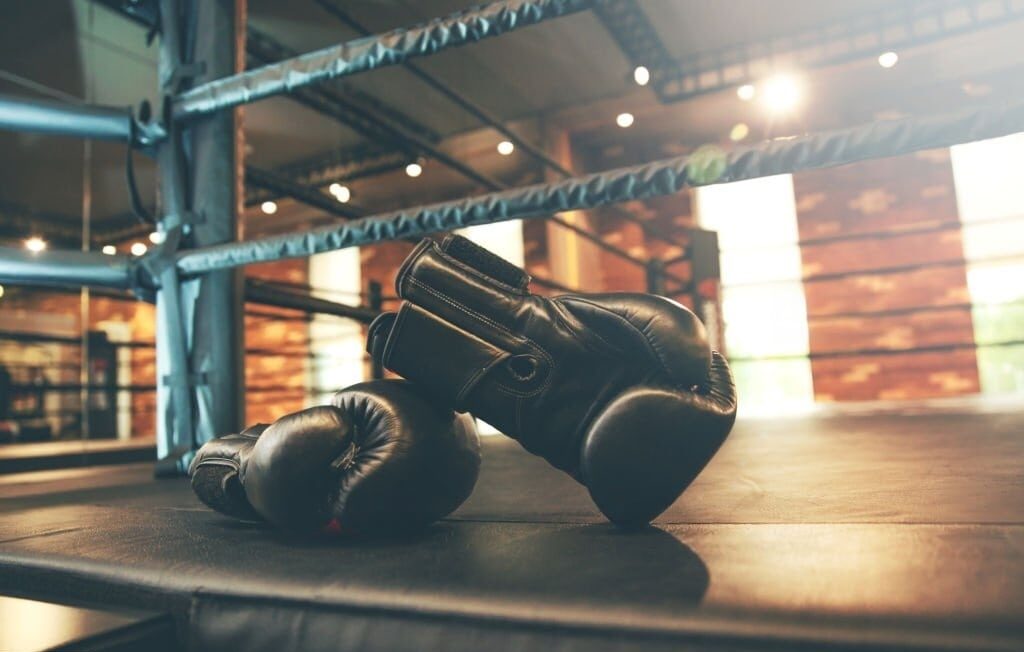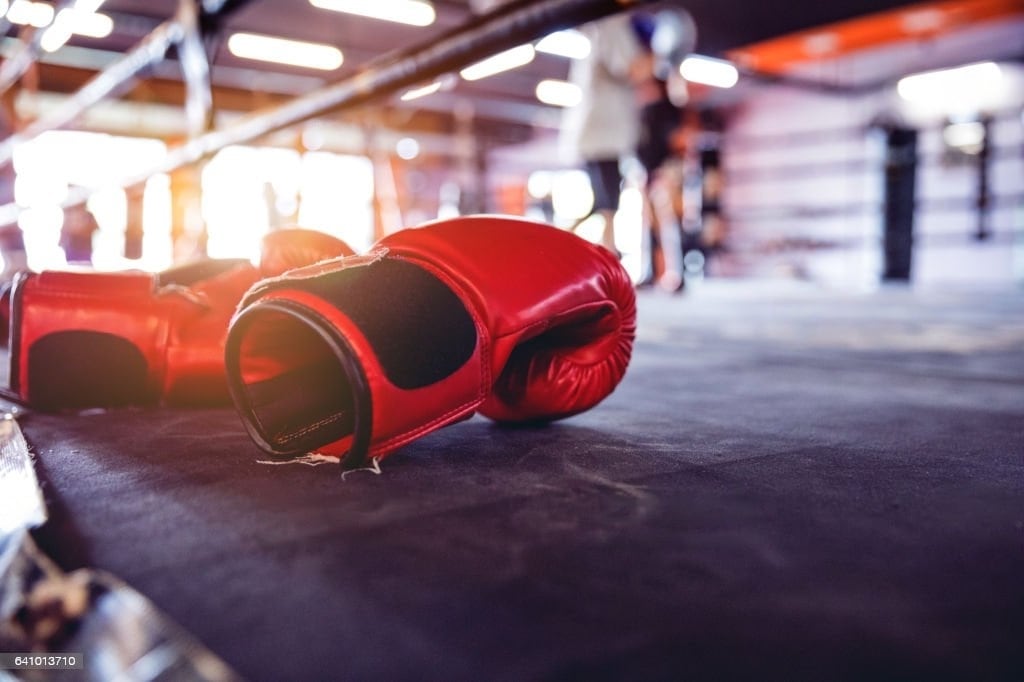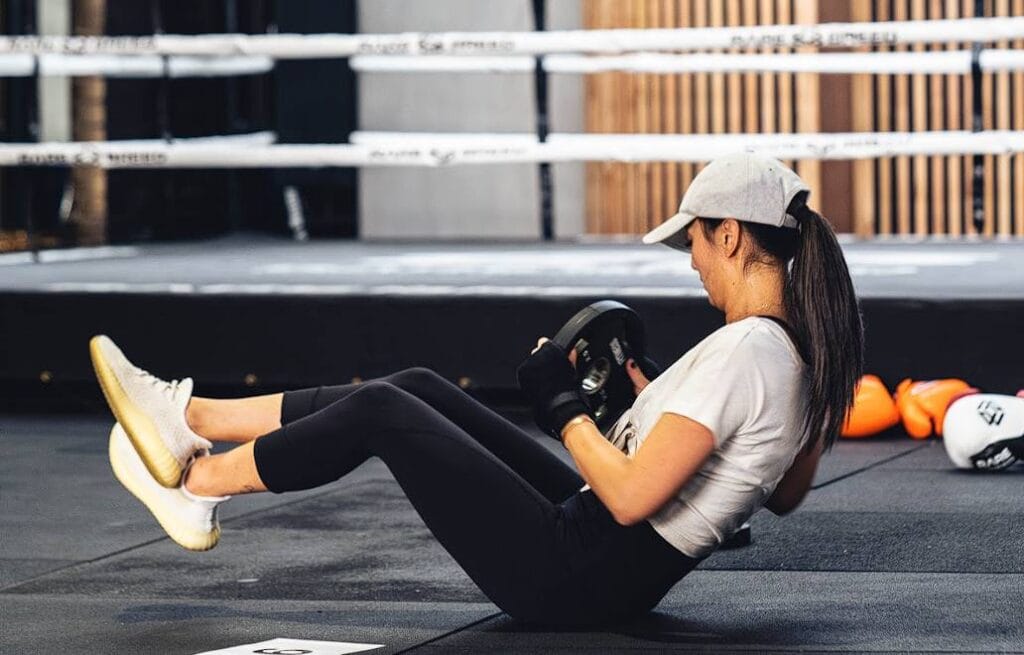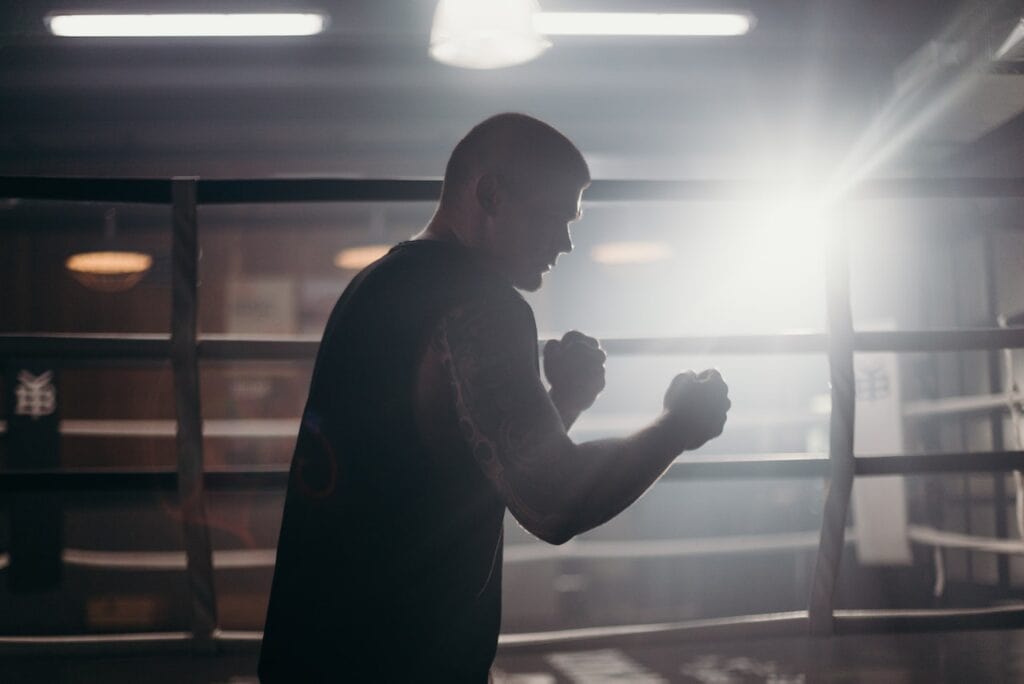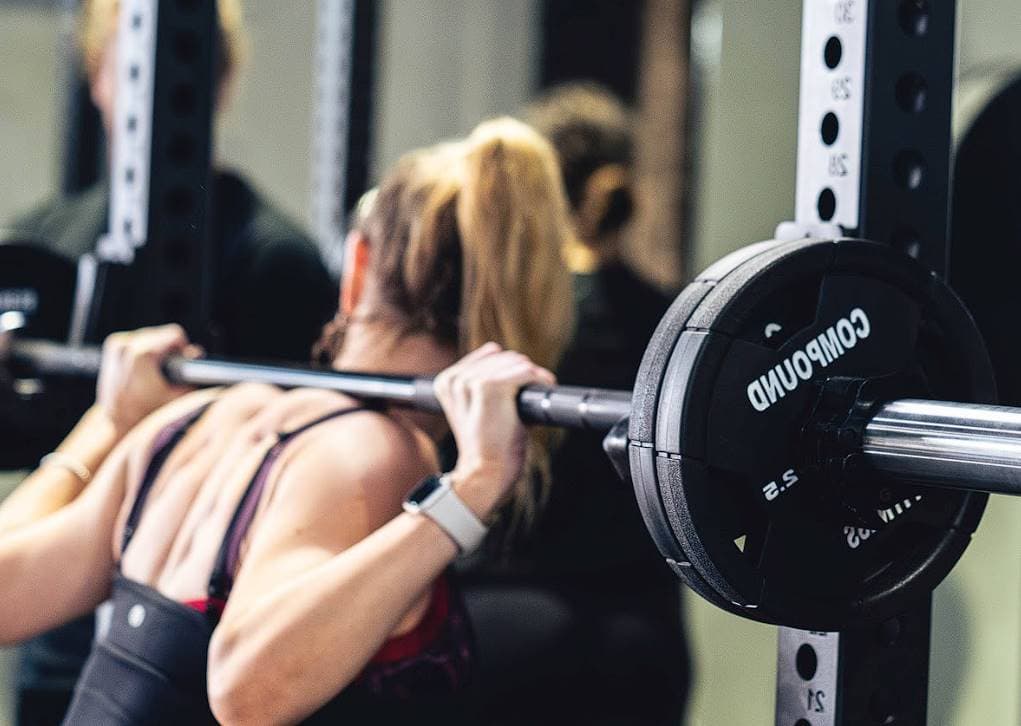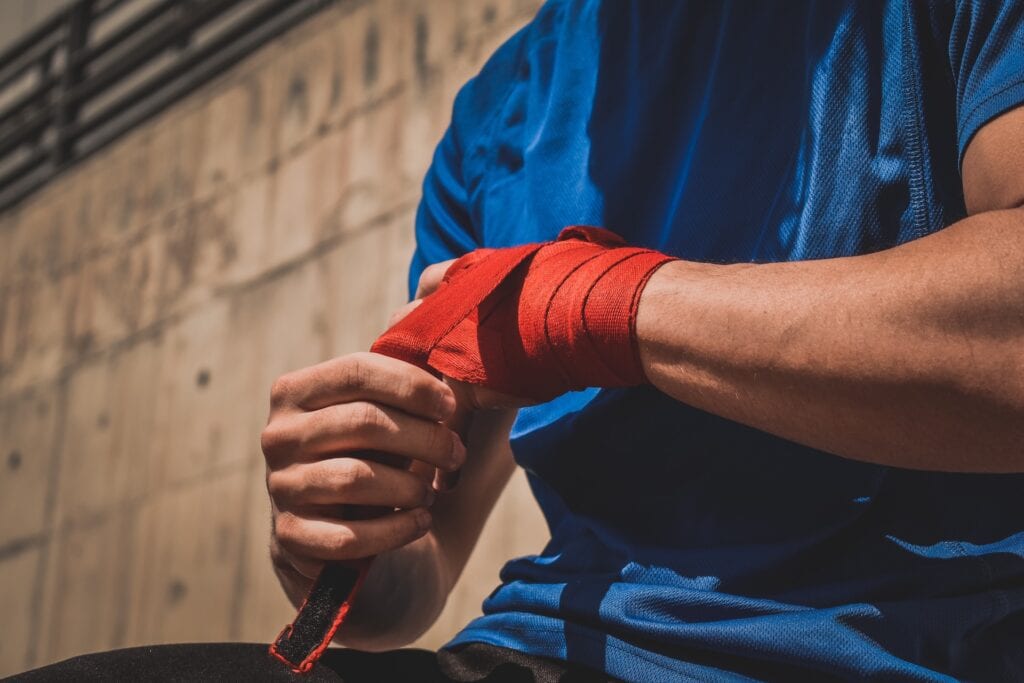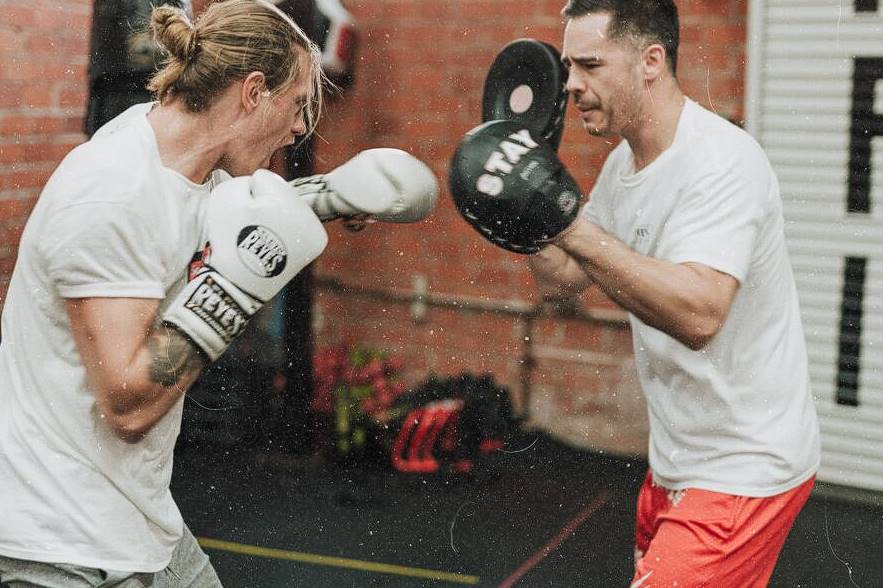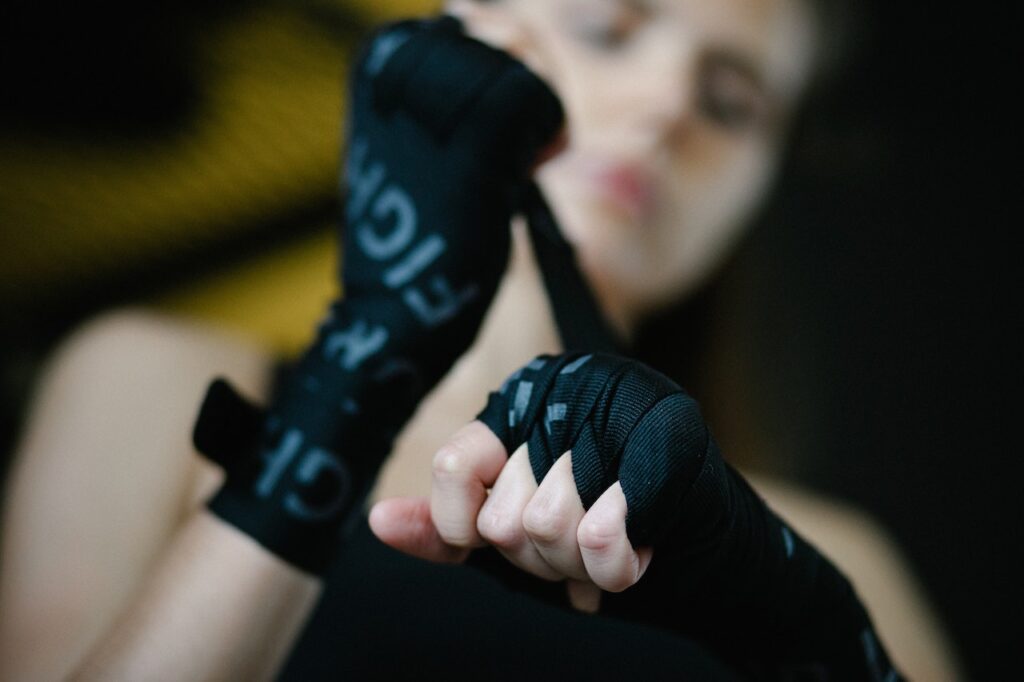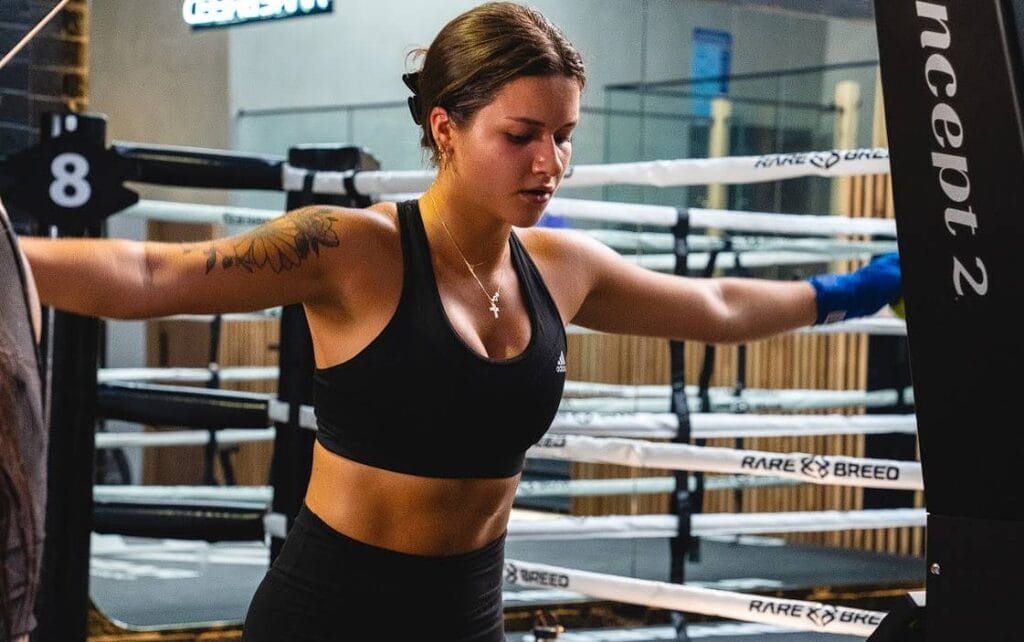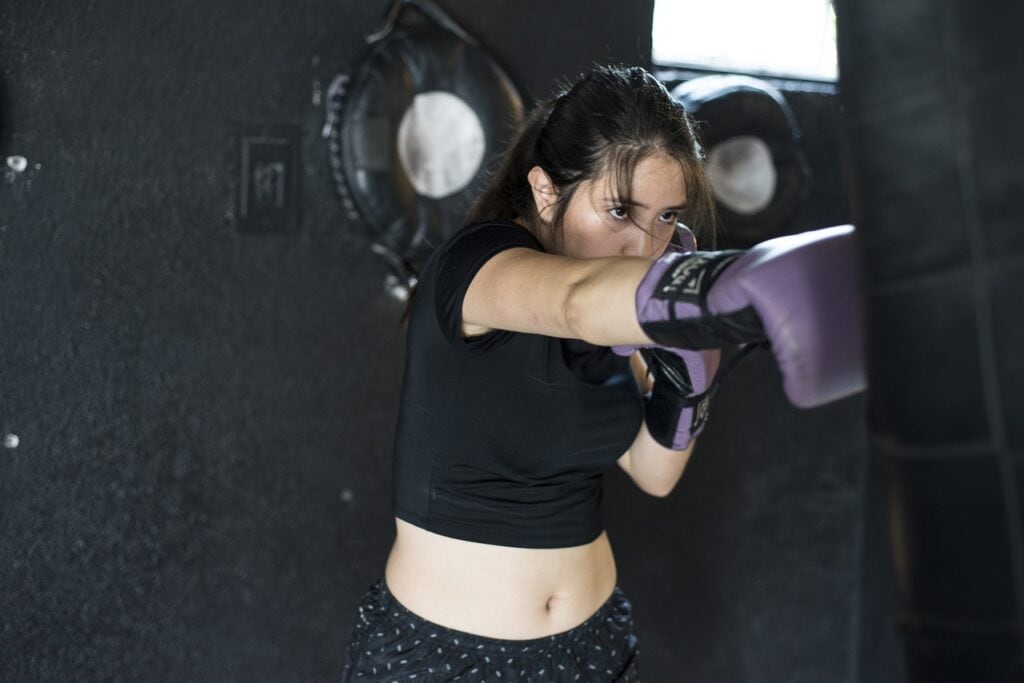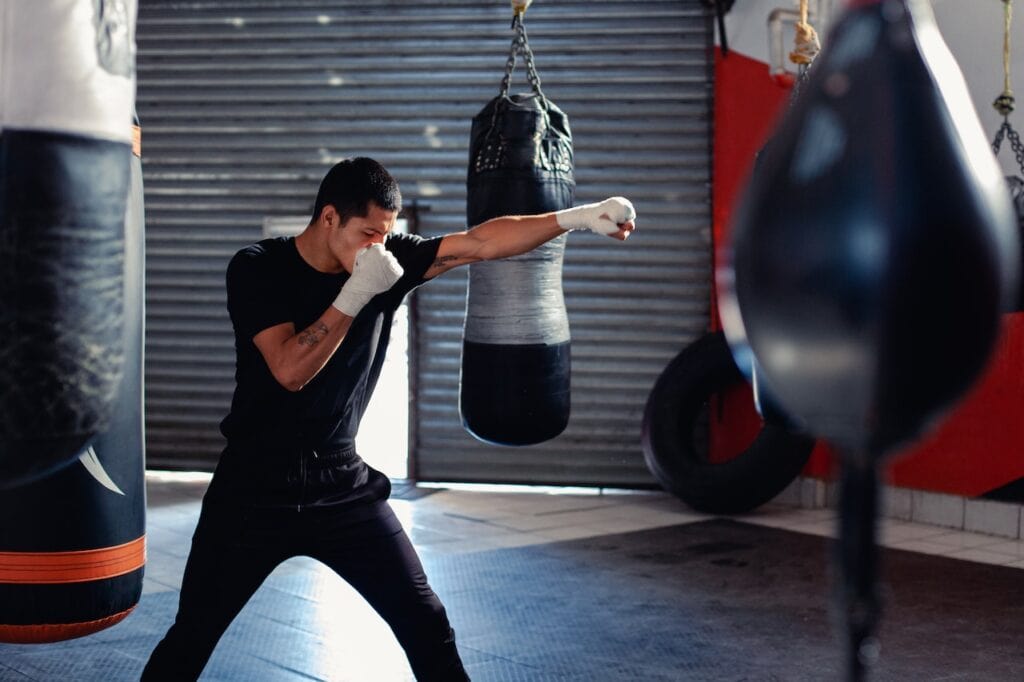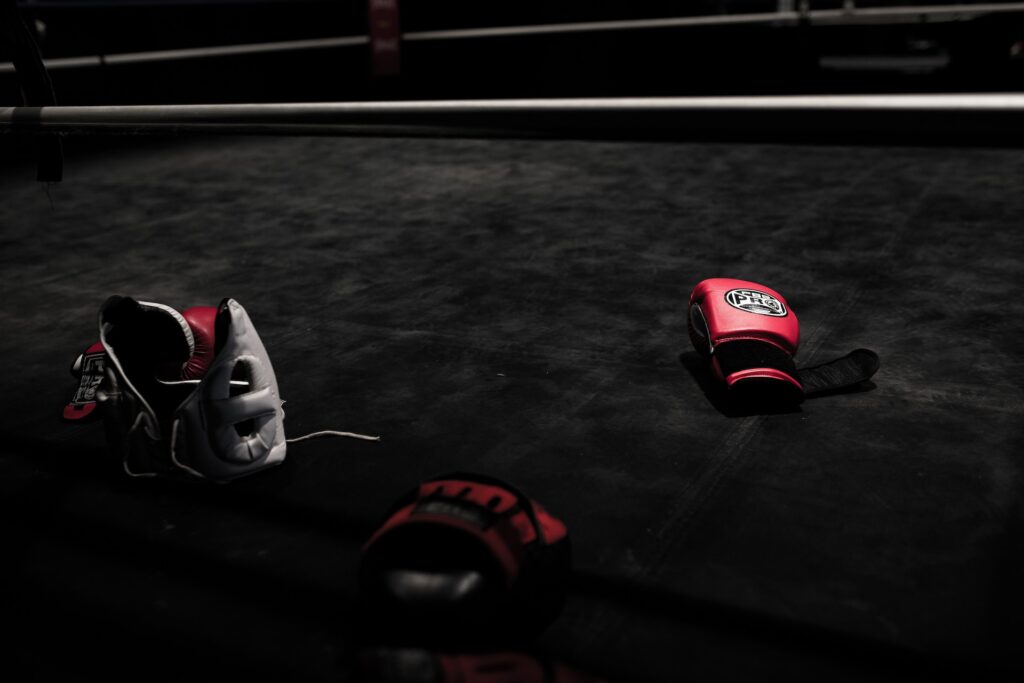An excellent workout should include some form of cardiovascular exercise, strength training, and muscle endurance training. The problem is that cardio could be better. Frequently, it is both monotonous and excruciating. So maybe you have to go for a run or do some boring jumping rope as part of your regimen.
What if there was another way to handle the situation?
Workouts with a heavy bag involve the use of the entire body and are guaranteed to increase your heart rate. You're moving quickly on your toes and throwing punches, so you should try to commit the combos you're practising to memory and leave room for improvisation.
Punching a heavy bag not only keeps your mind active but is also just simply enjoyable. Where do you begin, and what does an exercise routine with a heavy bag look like? Let's analyse it in more detail. When we are finished with you, you can punch the heavy bag at your gym with the same level of proficiency as the other boxers there.
Boxing Workouts for Beginners: Punching (Heavy) Bag
ARE PUNCHING BAGS A GOOD WORKOUT?
Your training will reach a whole new level if you incorporate the use of a heavy bag.
Boxing is a great form of cardiovascular exercise, and each punch you land on the bag also serves as a form of strength training for your muscles. As a result, you can expect to burn calories, enhance your coordination, and tone your muscles while simultaneously getting rid of tension.
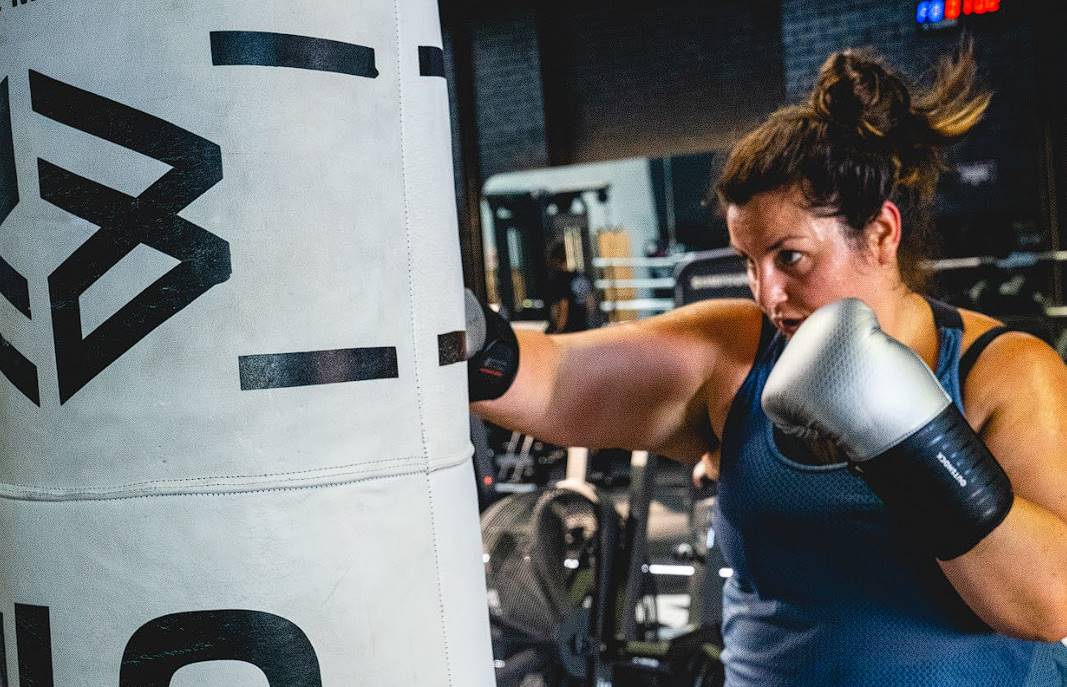
HOW TO USE A PUNCHING BAG: FOR BEGINNERS
Boxing bag workouts for beginners are meant to help you become more comfortable with basic punches and develop rhythm and confidence while working out on the bag.
In addition, boxing is made more enjoyable and exciting by introducing techniques like these punch sequences, which, despite their apparent simplicity, are designed to mimic actual fight conditions.
HOW LONG SHOULD YOU WORK OUT ON A PUNCHING BAG?
There are no hard and fast guidelines about the amount of time spent working out on the bag or even the level of force that should be applied. However, beginners should begin with shorter workouts (anywhere from 15 to 30 minutes) and keep the intensity between 50 and 75 per cent throughout the session.
Those just starting should complete each of these rounds in five minutes. Your current fitness level should be the primary factor in determining the number of rounds you complete. If you feel up to the challenge, feel free to extend the time you spend working out or increase the difficulty level.
PUNCHING BAG WORKOUT - WARMUP
Before beginning any physical activity, you should always warm up your muscles and get your blood moving. Even while working out with boxing bags does not put you at risk of injury, going into any sport that requires you to have stiff muscles puts you at risk.
Aim to spend around five minutes switching between different workouts. The following are some examples of good warmup exercises:
- Jumping Jacks Lunges
- Turns with the Arms
- Circles on the Hips
Your arms and shoulders will do most of the work throughout these activities, so stretch them thoroughly.
Hand wraps and boxing gloves are always recommended for those just starting.
PUNCHING BAG WORKOUT - DRILL 1
Jab – Cross – Right Body Shot – Left Body Shot
Choose a position ready for combat (right leg forward, knees bent, gloves in front of your face, elbows tucked close to the body). Place yourself far from the punching bag, slightly closer than arm's length.
- The jab and the cross should be delivered rapidly, so count "one-two" as you do.
- Raise the power of the two body blows you're about to deliver to your opponent to defeat them.
- Keep doing this for the next five minutes.
Rest for 1 minute or mountain climbers for 1 minute.
PUNCHING BAG WORKOUT - DRILL 2
Double Jab – Bob and Weave – Left Hook
Exercise your ability to snap your fingers in preparation for this double jab by moving extremely quickly. After the first blow, you want to avoid giving your opponent breathing room to respond.
- You should bob and weave while protecting your face with your gloves since you expect reprisal.
- Re-assume the fighter's stance and deliver the final blow with a powerful left hook.
- Keep doing this for the next five minutes.
Rest for 1 minute or plank for 1 minute.
PUNCHING BAG WORKOUT - DRILL 3
Straight Punches – Power Body Shots
This amusing combo is a great way to relieve stress while also throwing your opponent off their game.
- Take a stance before the punching bag and throw four consecutive punches as fast as possible. Make it your goal to hit the same target with each strike.
- After that, you should immediately focus on your speed while firing quick body shots (alternating left and right) until the count of ten is reached.
- Keep doing this for the next five minutes.
Rest for 1 minute or mountain climbers for 1 minute.
PUNCHING BAG WORKOUT - DRILL 4
Two Lead Kicks – Left Cross – Rear Kick
- Your forward leg should be extended at a right angle, and you should strike the heavy bag around halfway (where your opponent's body would be). Make contact with the bag using the portion of your shin just slightly above your ankle.
- While maintaining the lifted leg position, bend at the knee to deliver a second blow on the bag.
- Come back into a fighting stance and throw a left cross at your opponent.
- Turn your body to bring your back leg around, striking the bag at a higher angle (your opponent's chest or face). It will require you to pivot your upper body. Please make use of this devastating finishing kick to put an end to them!
Boxing and kickboxing are two forms of martial arts that are also extraordinarily enjoyable to practice in addition to being extremely efficient. Punching a punching bag engages your entire body in a full-body workout that relieves stress and keeps you motivated. As you gain experience and confidence, you should experiment with your unique combinations.
A Complete Guide to Punching Bag Workouts for Beginners
What Is The Best Punching Bag Workout For Beginners?
- Jacks of all Trades to Warm Up (1 minute)
- High-Knees (1 minute) (1 minute)
- Butt-Kicks (1 minute) (1 minute)
- Climbers of the Mountains (1 minute)
- Shadowboxing (1 minute) (1 minute)
- Jab Cross Hook Uppercut
Getting into a boxing stance is the first step in learning to jab. Your non-dominant hand should lead, and your knuckles should be exposed as you punch in the centre of the punching bag. As you throw the punch, your wrist will rotate in the middle of your body to create a rotating motion. In addition, because of the torque, it will generate a greater amount of power.
Do this exercise for one hundred repetitions during each workout session. Be sure to maintain your punches level and natural right to your eye, and use your other hand to shield your face as you do so.
1. Cross
When throwing a cross, you should use the arm and hand of your dominant hand. After assuming your boxing stance, bring your back arm forward and hit the bag as you extend it. As your hand moves away from your side, could you give it a small rotation to the inside?
Make sure to bring your back hand up by your face as you return your front fist to its original position by your side. Your jab and cross should land in the same place on the punching bag when you're practising them.
As instructed by the program, do one hundred reps of the cross.
2. Hook
To perform a front hook, bend your elbow to form a right angle with your front and extend your arm in the same direction as the floor. By rotating your waist, you can hit the punching bag more effectively. Repeat the previous movement on the opposite side of the body for a back hook.
Accelerate the movement by executing 20 seconds of a front and back hook combination. It will allow you to perform them into a circuit. Put your hands down for a one-second break between every set of hooks.
3. Uppercut
Make sure your knees are bent, and you're ready for an uppercut by reading this. When you push off the ground, you'll obtain power from your hips and the rest of your body. Shifting your weight effectively is one of the most important steps in learning how to throw an uppercut.
You may deliver a devastating uppercut by transferring your weight onto your front foot. Next, bring the elbow in front of you down so it comes close to touching the hip. At that position, you should give the bag a hard upward push from your legs to release your punch.
To execute a rear or back uppercut, repeat the previous step on the opposing side and switch to the other side. You may turn it into a circuit by rapidly switching between front and back uppercuts for a whole minute without taking a break.
4. Cool Down
Workouts with a punching bag are quite strenuous and can leave you exhausted. Nonetheless, taking some time to relax will help you feel better. After an exhausting session of punching a bag, there are various ways to relax the muscles in your body. Yet, stretching is one of the most effective strategies to decrease body temperature.
You can select any form of stretching from the options in your inventory. But, "Child's pose" is our choice since it is an excellent technique to reduce the pace of your heartbeat while also stretching out your shoulders, which are subjected to tremendous force during heavy bag training. In addition to stretches for the lower back and hip flexors, there are a variety of other stretches that you can do during the cool-down.
5. Combinations
- Jab-Cross (1-2) (1-2)
- Jab-Hook-Cross (1-3-2) (1-3-2)
- Cross-Hook-Cross (2-3-2) (2-3-2)
- Jab-Cross-Hook-Cross (1-2-3-2) (1-2-3-2)
- Jab-Cross-Jab-Cross-Hook-Hook (1-2-1-2-3-3) (1-2-1-2-3-3)
Combinations of punches might be challenging for beginners to understand at first. Yet, there are numbers on each of these punches. Therefore, it would help if you tried to recall a mix of numbers since this will simplify remembering the punching sequence.
To begin, experiment with basic combos by punching the punching bag. Then, remember the numbers printed on the punches, and get some counting practice with those numbers.
What Are The Benefits Of Punching Bag Workout?
- Increase the power and strength of your muscles.
- Enhances hand-eye coordination and dexterity.
- Improves one's overall core stability.
- Improve your aerobic fitness.
- Enhance self-defence tactics.
- Improve boxing technique.
- Decrease your levels of tension and anxiety.
- Assistance with reducing body fat.
- Get your body in shape and work on improving your upper-body strength.
- Increase your strength, your stamina, and your endurance.
The 5 Best Heavy Bag Workouts for Beginners
You can combine these circuits into a single twenty-minute workout or focus on a single circuit at a time, day after day, pausing briefly between each set. You will combine all of the punches, blocks, and slides you have learned in the previous sections and alternate between them.
Always get warmed up before beginning your workout. Shadowboxing is a great way to get your heart rate up and your blood flowing, which are great benefits of this workout.
- Put on your wraps, gloves, or both if necessary.
- Box with an imaginary opponent while maintaining a light and agile stance.
- Be sure to throw in all the punches you are familiar with. Then, give your full attention to each punch, remembering how to block, slide, and turn your body accordingly for each one.
Round One:
Basic Training
It is the first story below ground. Your combos and footwork will get a lot of work during this fundamental drill. You will construct all of your boxing talents on top of this foundation and not abandon them at any point in the process. If you try to hone your talents fully, you'll quickly become indispensable in this field.
- Begin with a minute of punching at your very maximum. Then, switch between uppercuts, jabs, hooks, and crosses throughout the fight. When you've landed each blow, return to your guard position quickly and avoid letting your arms drop.
- Keep up with the bag and time your punches so they connect with it when it is at the optimal distance.
- Go on to performing hooks for one minute with each arm.
- Remember that hooks are punches delivered at close range, so go closer to the bag when using them.
- Go on to the speed drills for one minute.
- Keep your feet moving.
- Make an effort to maintain the momentum of your blows moving as soon as possible.
- Maintain a high level of intensity during the presentation, and wait to let up until the minute is up.
Round Two:
It is a high-intensity interval training (HIIT) version of a heavy-bag workout. You are going to follow the instructions on the label to the letter. Strike the bag quickly and forcefully. Maintain your pace until the end of the interval; at this point, you should reward yourself with a brief break and then get right back into it.
- Throw fast combos at the heavy bag for twenty seconds following a quick warmup.
- Take a ten-second breather while maintaining your footwork.
- Iterate a total of eight times.
- This high-intensity interval training session can be lengthened by pausing for a break of approximately three minutes and continuing for as many rounds of eight sets as you can manage.
Round 3:
Fancy footwork
It will be the point in your heavy bag training that you will feel the most resemblance to the dreaded monotony of the treadmill. But, despite this, you are still an active participant in this situation because that bag will not start moving on its own. Choose some combinations you want to improve, then put those skills to use to get your bag moving.
- Get your body ready for action.
- To get the bag going, throw a couple of combination punches.
- Boxing technique that involves moving around the bag and following its movement while throwing in a few rapid combos to keep the fight going.
- Continue in this manner for three minutes.
- Rest for a full minute.
- Continue the fight for a total of three rounds.
Round 4:
Deadly Accuracy
This workout in accuracy is aimed at honing the precision of your punches, so get ready to throw some. It is something that cannot be negotiated if you are going to start sparring with a partner. You will need to acquire the skill of working in an area or spotting openings. It would help if you took advantage of your chances to land a hit on your opponent to win a match.
- Place some objectives into the bag.
- Warm up, and get the bag moving as much as possible.
- Pay attention to how the bag is moving.
- Your punches should only be directed at the target that you've set on the bag.
- Three times through, with each round lasting one minute.
Round 5:
Power Punching
- Start by giving the bag a few mild punches, using about half of your strength each time to get warmed up.
- Do combinations of punches on the bag while maintaining your body in motion throughout the workout.
- Have a buddy to help you keep the bag stable now that you've worked up a sweat.
- Let go, and for the next thirty seconds to one minute, throw punches at maximum strength in a continuous assault.
- Take pauses between barrages of equivalent duration to the barrages themselves.
- Five times in total.
- Repeat.
Boxing Heavy Bag Workouts For Beginners
How does punching heavy bags help you?
To begin, it is essential to determine how the heavy bag will facilitate your physical training. My experience has shown me that it is an excellent piece of gear for honing your combinations and increasing the overall punching power you possess. In addition, the method comes the closest to mimicking the experience of hitting an opponent. At the same time, outside practice and competition are necessary if you want to fight at that level.
You can get intense workouts from the heavy bag if you push yourself. You can also build on your cardiovascular and muscle endurance if you spend 20 to 30 minutes on the bag and perform the workout in an interval fashion.
On the other hand, the heavy bag can be fairly repetitious at times, leading to sloppy technique. It is one of the major drawbacks of using a heavy bag. Because of this, changing up your training routine every time you utilise the heavy bag is crucial.
Round 1 – Feet first and the jab
Before I begin a session on the heavy bag, I warm up my feet by moving around the bag and punching with the jab, considered the most important punch in boxing. Because you must get this technique right, you should begin by throwing this punch with very little force.
Be sure to incorporate techniques such as the double jab, jabs to the body, and punches thrown from various angles into your routine. Because this is only round 1, you should exert little effort (you can throw the occasional right if you feel tired).
Round 2 – Turn to Southpaw
I also like to switch my stance to Southpaw while maintaining the same technique as in the previous round. It may initially seem foreign to some people, but I enjoy doing it. It is beneficial to be able to throw punches from both the Southpaw and orthodox stances since you never know when you will need to employ one or the other. (If you are a Southpaw, switch to Orthodox.) In addition, you will almost certainly exercise muscles you were unaware you had, but it will most certainly warm you up.
Round 3 – Combinations
When I punch the bag during this round, I prefer to start incorporating more combinations than I did during the previous round. Take, for instance:
- Jab
- Jab – Cross
- Jab–Cross–Hook
- Jab – Cross – Hook – Cross
- Jab – Cross – Jab – Cross
You will be able to incorporate head movement, upper body rolls, and foot movement as you progress and grow in your skill set, but before you do so, you need to make sure that your punching technique is correct. These are some of the boxing combos that are among the basic moves to learn.
Round 4 – Combinations x 2
I like experimenting with various combinations in this round by varying what I toss a bit more and trying to be creative in using what I have. It challenges your mind and gets progressively more difficult as the game progresses. You can test out some of these other combinations on your own:
- Jab – Jab – Cross
- Cross–Jab – Cross
- Jab – Right Uppercut – Left Hook – Cross
- Jab – Jab – Hook – Cross
- Left Hook – Right Hook – Left uppercut – Cross
- Left Hook Body – Left Hook head (vice versa)
Take your time with these and get used to their technique and sequence before moving on to the next round because they can be fairly difficult to get used to compared to the previous round.
Round 5 – Light punches and fast bursts
Even if you've already put much effort into the combos in the rounds before this one, you still have to be creative with the remaining rounds.
My strategy for this round is to take it easy with some straight (jab/cross) light shots near the bag to slow the pace. My normal pattern consists of around 20 lighter, slower blows, followed by a burst of about ten faster punches, and then I return to the lighter, slower punches. It doesn't sound too difficult right now, but by the time you conclude this round, you'll definitely be feeling it in those fast bursts.
Round 6 – Power shots
Now, everyone loves it when the boxer lands a big punch and tries their best to land one of those enormous bombs on the bag. However, it is important to remember that you should punch slowly and deliberately during this round to improve your punching technique for the power strikes you will be performing.
Because you will already be exhausted from the previous rounds, you need to think about how you are throwing your punches. With an emphasis on strength and skill, the following are some options for you to consider trying:
- The right hook head follows the left hook body, the left hook head, and finally, the right hook body (Be closer to the bag for this one).
- Right, Cross after a Light Jab (focus on turning your hips and twisting your shoulder while you throw your right hand to maximise your power).
Remember that power shots need significant physical effort; therefore, take your time, but try not to go too slowly.
Round 7 – Inside fighting
When training on the heavy bag, the next round needs to be addressed, even though by this point, you, as a beginner, are probably starting to feel the effects of the workout very noticeably.
This round will emphasise battling on the inside (up close) - now, this may be something that only someone who wants to compete or spar might want to try out, but if you want to improve your heavy bag workout even more, this can be an excellent workout for beginners as well.
In this round, you will want to get as close to the bag as possible and throw short, compact punches while leaning against it so that its weight works against you. Hooks and uppercuts are good examples of these types of punches.
As the round continues, you will notice that the bag's weight affects your legs. But it would help if you didn't lean against the bag the entire time. If you find yourself in a clinch with the bag, try to free yourself and re-engage it from a new angle or use your other shoulder.
Round 8 – One last dance
Congratulations, you have made it to the final round! Now that we are down to the last round, it is quite simple for both the work rate and the technique to slip. But if you're starting, this is a great step for you to take if you've managed to go through this, which can be challenging for some individuals to do.
In the final round, I like to try a combination of all of the previous rounds combined. In this round, I see you and myself competing against one another to see who can make the most effort, so I dig deep for this round to give it my all. Of course, if this doesn't strike your fancy, you can always give one of the other rounds a second shot from the provided list.
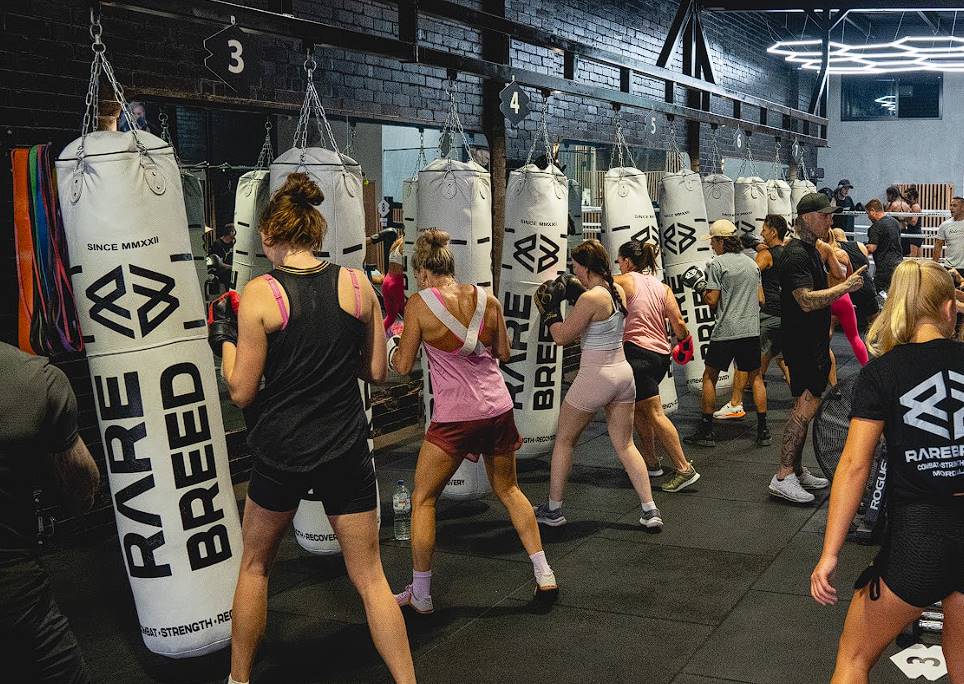
How Does Punching Bag Help In Polishing Your Skills?
Boxing with a punching bag offers several benefits to the boxer. Doing out with a punching bag strengthens your muscles and builds bone density, contributing to an overall increase in upper-body strength.
The normal weight range for a hefty punching bag is between fifty and one hundred fifty pounds. On the other hand, three distinct kinds of fillers can be used to stuff a punching bag.
- Sand
- Abandoned Clothes
- Sawdust
You can use whatever you like to fill your punching bag; the decision is yours. Workouts with a heavy bag are not only highly beneficial in a variety of ways, but they also help you lose weight in a hurry. Engaging your upper body, lower body, and core while working out with a punching bag can allow you to get the most out of your training regimen.
On the other hand, once you strike a punching bag, you use not only your fists but also your knees and feet. When you assume a boxing stance, your body experiences significant resistance because it is engaged. The muscles throughout your body are engaged, including those in your shoulders, cor.
You utilise your arms and back to perform punches such as hooks and uppercuts. On the other hand, your shoulders and chest get a good workout when you practice throwing straight punches. Try to switch up your workout regimen so that you are working new muscles and parts of your body. It will help you achieve greater results and build more muscle mass.
Punching a punching bag increases both your strength and your stamina. In addition to this, you will continue to experience an elevated metabolic rate for several days after that. Training with a punching bag requires you to exercise both your upper and lower bodies, ultimately serving as the foundation for developing your entire body. Your boxing skills will improve as your body becomes more toned and your bones strengthen thanks to punching bag workouts. In addition, it helps improve your stamina, making it easier for you to stay in the ring until the very end.
Conclusion
Any workout plan would benefit tremendously from the addition of heavy bag training. It is a high-intensity workout that will help you burn fat and significantly increase your endurance. As a result, you're getting a great cardio workout and a high-rep exercise that unlocks a whole new universe of possibilities for physical activity.
The heavy bags are an excellent tool for learning the fundamentals of boxing, and mastering them will pave the road for you to begin sparring with other people. In addition, heavy punching bags are a wonderful tool for increasing your overall fitness level, and whatever else you do will supplement the punching you perform.
Working out with dumbbells and increasing your muscle mass in any other way also helps you throw your weight more effectively. Boxing is a wonderful martial art, and the more powerful your upper body is, the more time you'll be able to devote to training in boxing gyms and mastering this skill.
Frequenly Asked Questions
How long does it take to see results from boxing workouts?
The time it takes to see results from boxing workouts can vary depending on several factors, including your starting fitness level, consistency of training, nutrition, and individual body composition. Generally, you may start to notice improvements in cardiovascular fitness, coordination, and muscular endurance within a few weeks of consistent training.
For significant changes in body composition, strength, and skill development, it usually takes several months of regular training. Results will also be influenced by factors such as genetics, diet, and overall lifestyle habits. Remember to set realistic expectations, stay committed, and celebrate progress along the way.
Can I incorporate strength training with boxing workouts?
Yes, incorporating strength training into your boxing workouts can be beneficial. Strength training helps improve muscular endurance, power, and overall performance in boxing. Consider adding exercises like weightlifting, resistance band workouts, or bodyweight exercises to target different muscle groups and enhance your overall strength.
It's important to strike a balance between boxing-specific training and strength training. Consult with a trainer to create a well-rounded program that complements your boxing workouts without compromising technique or increasing the risk of overuse injuries.
Are boxing workouts suitable for weight loss?
Yes, boxing workouts can be an excellent option for weight loss. Boxing involves dynamic movements, engages multiple muscle groups, and increases heart rate, which contributes to burning calories. Additionally, the intensity of boxing workouts can help improve cardiovascular fitness and promote fat loss.
To maximize weight loss through boxing workouts, incorporate high-intensity intervals, vary your punches and combinations, and maintain consistency in your training routine. Remember that weight loss also depends on a balanced diet and creating a calorie deficit.
How long should a typical boxing workout session last?
The duration of a boxing workout session can vary depending on your fitness level, goals, and available time. Here's a general guideline:
- For beginners, aim for a session lasting 30 to 45 minutes. This duration allows you to learn and practice basic boxing techniques, perform cardio exercises, and gradually build endurance.
- As you progress, you can extend your workouts to 60 minutes or more, incorporating additional rounds of punching combinations, bag work, conditioning exercises, and skill drills.
- Remember to include warm-up and cool-down periods in your overall workout time to prevent injury and aid recovery.
Are boxing workouts suitable for everyone, including women?
Yes, boxing workouts are suitable for everyone, regardless of gender. Boxing training offers numerous benefits, including improved cardiovascular fitness, strength, coordination, and self-defence skills. It's an excellent full-body workout that engages various muscle groups and can be tailored to individual fitness levels.
If you're a woman interested in boxing workouts, finding a supportive environment and knowledgeable trainer who can guide you through proper technique and safety precautions is essential. With the right approach, boxing workouts can be empowering and enjoyable for women.
